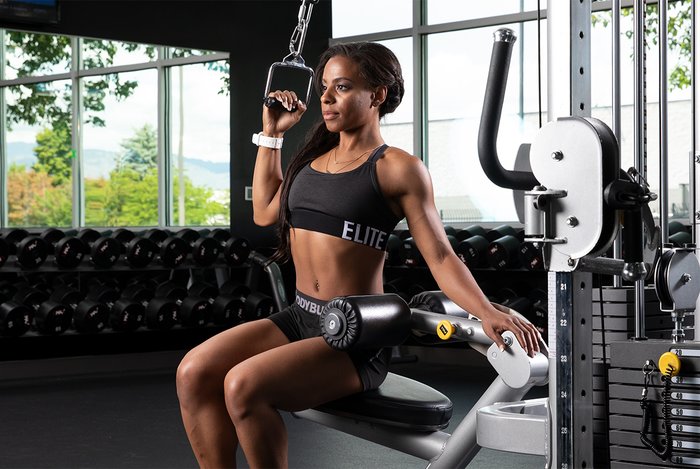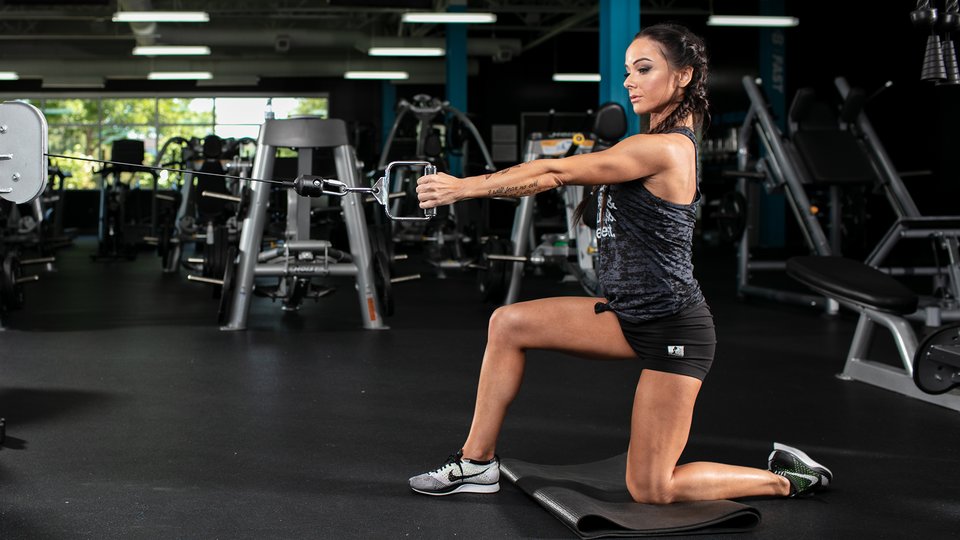I have always been obsessed with training back and watching my back width and thickness grow. To me, a noticeable V-taper is a sign of strength and beauty.
Nowadays, though, I am seeing beyond the aesthetic benefits. I recognize what it means to have a strong posterior chain—the effect on a person’s posture, confidence, and quality of life. Simply put, when you train your back muscles effectively, you’ll stand taller, look and feel stronger, and decrease your chance of injury due to an imbalance between your pressing muscles (pecs and shoulders) and pulling muscles.
If you’ve been struggling with back development, learn how to apply the science of training to the art of training, and then put in the work to take your back to the next level.
The Science of Back Training
The specific muscles you focus on when training back are the traps (upper, middle, and lower fibers), rhomboids, latissimus dorsi, rotator cuff muscles, teres major, and posterior deltoids. In order to develop thickness and width in the right areas, you need to incorporate exercises that mimic their actions. That means rowing movements, pull-down variations, external rotations, and rear-delt raises.
For most people, 10-20 sets per body part per week is recommended for muscle hypertrophy, but any loads and repetition ranges can build muscle if you take your sets almost to muscular fatigue. This program uses various rep protocols, from 6-20. Since you are going to take on more total sets to encourage growth, the total amount of work is divided into two sessions.
All other muscles will be on a maintenance program with two full-body workout days. That gives you more work capacity to spend on training your back.

The Art of Training
The art of training involves the nuances of the workout—the exercises, exercise execution, and exercise order. You need to think about training your back muscles from various angles in order to promote muscle fullness and symmetry as well as joint congruence and health. The targeted muscle fibers will vary according to the angle of pull and the position of the body in relation to the resistance. You’ll pull from all angles and do both bilateral and unilateral exercises.
Another key aspect is your intention while performing an exercise. Your goals should be more than just getting the weight from point A to point B. You want to create tension in the target muscles. Tension is the language of the muscles, so if you want to grow, you need to master it.
Since you can’t see your back muscles without a mirror, you have to rely on feel to know they are working, and that can be difficult. You have to learn how to connect with the muscles—the famous mind-muscle connection—and train with intent. Visualizing the contraction and lengthening of the muscle increases neural input, which increases muscle activation.
Furthermore, be sure to control the eccentric part of the exercise for 2-3 seconds, and don’t let gravity pull the weight down for you. The more you control the weight, the more tension you create. If you’re still working toward feeling a muscle work properly, keep the weight on the lighter side until you’ve mastered it with proper form. You don’t want secondary muscles taking over the movement.
The Workouts
Here’s a sample weekly split that includes a specialized back workout two days per week. Your goal on the “back attack” days is to increase the load at the same number of reps or increase the reps at the same load within the target range.
Follow this routine for at least 4-6 weeks:
- Day 1: Back attack
- Day 2: Rest
- Day 3: Full body
- Day 4: Rest
- Day 5: Back attack
- Day 6: Rest
- Day 7: Full body
Your back workouts for Day 1 and Day 5 look like this:

Workout 1
Seal row: 4 sets of 6-8 reps, rest 2-3 min. between sets. Use a neutral grip.
Single-arm lat pull-down: 3 sets of 10-12 reps, rest 2-3 min. between sets. Use an overhand grip.
Straight-bar high-cable row: 3 sets of 12-15 reps, rest 1-2 min. between sets. Use an underhand grip.
Superset:
Supine face pull: 2 sets of 10-15 reps, rest 1 min. between sets. Hold the peak contraction for 2 sec.
Workout 2
Pull-up: 4 sets of 6-8 reps, rest 2-3 min. between sets. Substitute wide-grip lat pull-downs if unable to do pull-ups.
Chest-supported single-arm row: 4 sets of 10-12 reps, rest 2-3 min. between sets. Go from a neutral to a supinated grip.
Seated cable row: 3 sets of 12-15 reps, rest 1-2 min. between sets. Use a wide overhand grip.
Superset:
If you finish this and want another back-focused plan down the road, check out 30-Day Back with Abel Albonetti. It’s a four-week plan for the advanced lifter.
